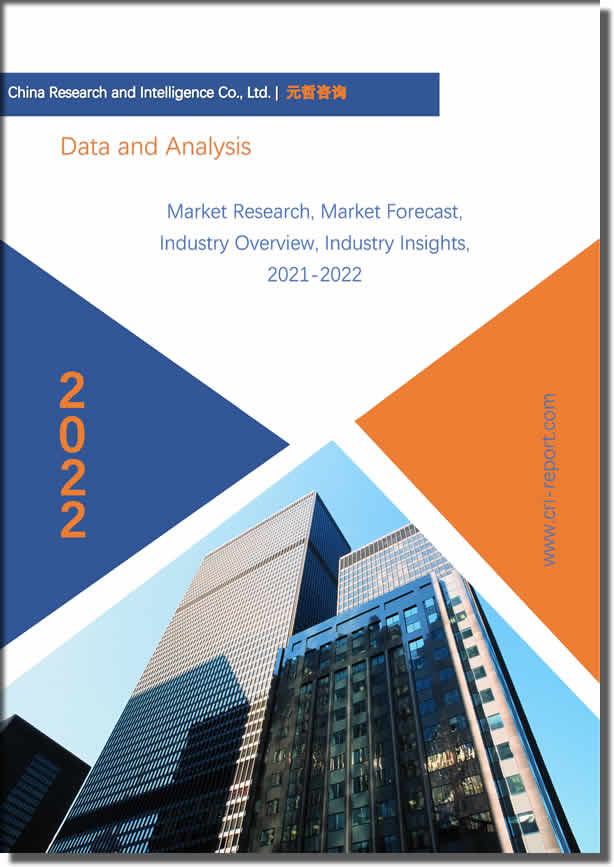Description
Motor Control Centers Market
Product Overview
Set of either one or more parts enclosed and has a common power bus is a motor control center. The main goal of the MCC is to monitor the distribution of electrical power to electric motors. In order to maximize efficiency and reduce running costs, these centers play an important role. In addition, motor control centers can integrate production and business networks with field equipment efficiently. Widely accepted today in manufacturing units, they provide paramount security coupled with intelligent monitoring as well as motor control relay diagnostic capabilities. It consists of different enclosed parts with a common power bus containing a combination starter, which in turn consists of a starter engine, fuses or circuit breaker, and power disconnection.
Market Highlights
Motor Control Centers Market is expected to project a notable CAGR of 6.2% in 2030.
Motor Control Centers Market to surpass USD 6.9 Billion by 2030 from USD 4.3 Billion in 2019 in terms of value growing at a CAGR of 6.2% throughout the forecast period, i.e., 2020-30. In emerging economies such as China, India, and Brazil, the expansion of the manufacturing sector is expected to remain a key driving force for promoting market growth in smart motor control centers. In view of the rising energy demand in the household and oil & gas industries, growth in power infrastructure in the Middle East is expected to encourage the use of intelligent motor control centers. In view of the abundance of minerals, the strong infrastructure of the mining industries in China and Australia, together with regulatory support to encourage domestic investment, is expected to increase the use of the commodity. Intelligent motor control centers are often used to control process flow in operations as a predictive maintenance tool. Development in the U.S. and Canadian oil & gas industries is expected to have a positive effect due to the expanded production potential of unconventional sources, including shale gas.
Motor Control Centers Market: Segments
Intelligent MCC segment to grow with the highest CAGR during 2020-30
Motor Control Centers Market is segmented by Type as Conventional MCC and Intelligent MCC. The conventional motor control centers segment is estimated to lead the market with a share of over XX.X% in 2019. The key factors driving demand for conventional motor control centers during the forecast period are the increasing demand for industrial automation in developed regions and the benefits provided by conventional motor control centers, such as high level of protection, easy expansion and adjustment, fast and smooth maintenance, and improved reliability and operability. Increasing adoption of motorized automation across various industries including automotive, electronics, and biotechnology, is expected to fuel the demand for the commodity in view of providing advantages such as decreasing idle time. For all industrial applications, such as oil & gas, cement, chemicals, manufacturing, automotive motives, power generation, intelligent motor control centers are able to control the motors from a central location. In view of the increasing knowledge of motorized circuit controls (MCC) for providing diagnostic capabilities, loss detection, and predictive capabilities, these product types have received attention.
Oil & Gas Segment to grow with the highest CAGR during 2020-30
Motor Control Centers Market is segmented by End-Users into Oil & Gas, Chemical &, Petrochemicals, Utilities, Food & Beverage, Mining and Others. The oil and gas segment accounted for the largest revenue share of 70% in 2019 and is projected to maintain its lead over the forecast period. Due to large-scale applications in different sectors, the industrial segment is the biggest end-user for motor control centers. Oil and gas, chemicals, mining and metals, cement, and services have been further sub-segmented into the industrial segment. The largest end-users in the industrial segment are the oil and gas and mining and metals segments; however, owing to the fall in oil prices, these segments are expected to achieve slow growth during the forecast period. The slump in oil prices has resulted in oil and gas producers cutting costs which in turn affects the demand for motor control centers.
Motor Control Centers Market: Market Dynamics
Drivers
Increasing Level of Industrial Automation
High levels of automation in manufacturing plants have resulted from technical changes. All manufacturing plants compete to meet standards of quality and safety, achieve maximum productivity and sustain reasonable prices for goods. This has resulted in industries automating their processes, such as motor control centers, via intelligent motor control equipment. This has further resulted in growing demand in developing regions for motor control centers. The demand for motor control centers is driven by the increasing adoption of smart motor control centers that provide diagnostic capabilities, identification of losses, and predictive maintenance features. In energy-intensive applications, motor control centers integrated with process control and smart motor devices can provide better performance. The implementation of automation is therefore likely to boost the market for motor control centers in different industries.
Continuous technological advancements and discoveries
The increase in industries such as food and beverage, pharmaceuticals, and pulp and paper can be attributed to the demand for MCCs from developing countries. The global demand for MCC is expected to be powered by continuous technological advances and discoveries in communication and transmission networks. New technologies made to meet industrial requirements are intelligent MCCs (MCQs) with remote diagnostic capabilities and advanced functionality such as loss detection and predictive maintenance. It is anticipated that the high level of investment costs incurred for the construction of motor control systems will remain a significant factor in developed economies, including the U.S. and Germany. Manufacturers are likely to raise investment in new product production with low insolation costs and improved user-friendly features.
Restrain
Decreasing crude oil prices
One of the leading end-user markets of motor control centers in the oil & gas industry. The recent decrease in the price of crude oil has led to a dramatic drop in capital expenditures, decreasing demand for industrial equipment. Instead of purchasing new and more effective goods, this has left the oil & gas companies focused more on improving operational performance with the same devices. By enhancing operating performance and working with fewer resources after the industry overcomes the current oil price situation, businesses are working on streamlining operations. The decrease in crude oil prices can be due to the rising supply of crude oil from the US and OPEC countries, such as Saudi Arabia, and to the lifting of sanctions against Iran in 2016. This has resulted in a decrease in the oil & gas industry’s spending, which is expected to serve as a constraint to the demand for motor control.
Motor Control Centers Market: Key Players
ABB Ltd.
Company Overview, Business Strategy, Key Product Offerings, Financial Performance, Key Performance Indicators, Risk Analysis, Recent Development, Regional Presence, and SWOT Analysis.
Eaton Corporation
Larsen & Toubro Limited
LSIS Co. Ltd.
Mitsubishi Motors Corporation
Rockwell Automation, Inc.
Schneider Electric SE
Siemens AG
TES Group
Tesco Controls, Inc.
Motor Control Centers Market: Regions
Motor Control Centers Market is segmented based on regional analysis into five major regions. These include North America, Latin America, Europe, APAC, and MENA.
Motor Control Centers Market in North America led the market with a lion share of more than XX.X% in 2019 in light of the growing implementation of automation control systems in the United States and Canada’s manufacturing sectors. Rising spending on utilities is projected to have a negative effect on the demand in developed markets, including Germany and France. A positive outlook for manufacturing sectors in China and India is expected to play a crucial role in advancing the growth of the market for smart motor control centers in view of regulatory support to encourage domestic investment. Saudi Arabia’s changing preference from the upstream sector to the automotive and chemical sectors of the governments of Middle East countries is expected to increase demand in the manufacturing sector. As a consequence, the factors listed above are expected to open up new opportunities for the Middle East motor control market over the next eight years.
Competitive Landscape:
The Motor Control Centers market, which is highly competitive, consists of several major players such as ABB Ltd., Eaton Corporation, Siemens AG, Schneider Electric holds a substantial market share in the Motor Control Centers market. Other players analyzed in this report are Rockwell Automation, General Electric, Fuji Electric, Gemco Controls Limited, Mitsubishi Electric Corporation, and WEG, Sun-Tech Engineers, Vidyut Control India Private Limited, Rolla Limited, and Technical Control System Limited among others.
Key players are adopting inorganic growth strategies such as product launches in the global nutritional supplement market. For instance, In June 2019, Schneider Electric launched motor control centers with arc flash isolation design, which helps to prevent arc flash caused by extinguishing, originating, and containing the arc energy.
Motor Control Centers Market is further segmented by region into:
North America Market Size, Share, Trends, Opportunities, Y-o-Y Growth, CAGR – United States and Canada
Latin America Market Size, Share, Trends, Opportunities, Y-o-Y Growth, CAGR – Mexico, Argentina, Brazil, and Rest of Latin America
Europe Market Size, Share, Trends, Opportunities, Y-o-Y Growth, CAGR – United Kingdom, France, Germany, Italy, Spain, Belgium, Hungary, Luxembourg, Netherlands, Poland, NORDIC, Russia, Turkey, and Rest of Europe
APAC Market Size, Share, Trends, Opportunities, Y-o-Y Growth, CAGR – India, China, South Korea, Japan, Malaysia, Indonesia, New Zealand, Australia, and Rest of APAC
MENA Market Size, Share, Trends, Opportunities, Y-o-Y Growth, CAGR – North Africa, Israel, GCC, South Africa, and Rest of MENA
Motor Control Centers Market report also contains analysis on:
Motor Control Centers Market Segments:
By Type:
Conventional MCC
Intelligent MCC
By Voltage:
Low Voltage MCC
Medium Voltage MCC
By Component:
Busbars
Overload relays
Variable speed drives
Soft starters
Others
By End-user:
Oil & Gas
Chemical & Petrochemicals
Utilities
Food & Beverage
Mining
Others
Motor Control Centers Market Dynamics
Motor Control Centers Market Size
Supply & Demand
Current Trends/Issues/Challenges
Competition & Companies Involved in the Market
Value Chain of the Market
Market Drivers and Restraints
FAQs on Motor Control Centers Market
Which segment is anticipated to hold the largest market share?
At what CAGR is the market anticipated to grow between 2020 and 2030?
Who are the key players in the Motor Control Centers Market?
What could be the challenging factors in the growth of the Motor Control Centers Market?
What are the growth drivers for the Motor Control Centers Market?


